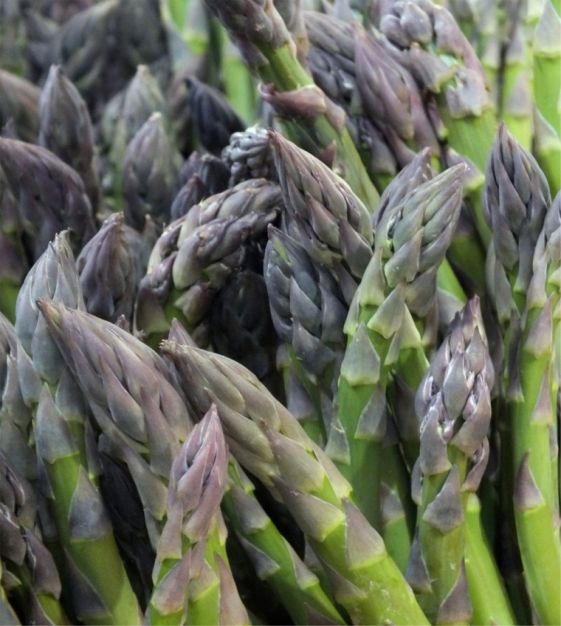Back to Top
Luscious Green Asparagus AKA UC 157 (F2)
The fresh market leader since its 1978 introduction by the University of California, our Luscious Green Asparagus, technically known as UC 157, produces loads of early, tasty, dark all-green spears without any purple pigmentation except for the tips. Unlike most green varieties, its straight, tight, tapering heads are dependable even in temperate climates and high heat. Savor it in Still River Cafe's velvety Asparagus Bisque with a Parsnip Flan, or simply, in our Asparagus Rafts. (OP.)
One packet of about 100 seeds
One packet of about 100 seeds
- Buy 10 for $5.20 each and save 10%
- Buy 50 for $4.30 each and save 25%
- Information
- Gardening Tips
Asparagus initially takes a bit of work and patience, but it's well worth it. One of nature's perfect foods, Asparagus could be the foodie icon of spring. Just wait until you've tasted your own freshly harvested spears: unadulterated Asparagus ambrosia, whether you prefer them thin and snapped, or thick and shaved with a vegetable peeler; and raw, steamed, sautéed, roasted or grilled. No other spear will ever come close: once cut, they start to lose their innate sweet succulence. Fresh Asparagus is a guilty pleasure plain, anointed with Hollandaise Sauce, topped with butter and chopped medium-boiled eggs, or incorporated into novel pasta dishes, stir-fries and soups. Fresh Asparagus deserves your finest table setting. It's a celebration of the garden's rebirth.
Seed should be sown in a temporary nursery bed, then transplanted to a permanent patch after one season. Once in its permanent spot, it's easy to grow in horticultural zones 4 to 8. It can take up to 4 years to produce spears for harvest without damaging the rootstock for future crops, but you can sneak a few spears for special dinners after 3 years. How could you resist? Deer-resistant.
Average seed life: 3 years.
Average seed life: 3 years.
Asparagus initially takes a bit of work and patience, but it's well worth it. One of nature's perfect foods, Asparagus could be the foodie icon of spring. Just wait until you've tasted your own freshly harvested spears: unadulterated Asparagus ambrosia, whether you prefer them thin and snapped, or thick and shaved with a vegetable peeler; and raw, steamed, sautéed, roasted or grilled. No other spear will ever come close: once cut, they start to lose their innate sweet succulence. Fresh Asparagus is a guilty pleasure plain, anointed with Hollandaise Sauce, topped with butter and chopped medium-boiled eggs, or incorporated into novel pasta dishes, stir-fries and soups. Fresh Asparagus deserves your finest table setting. It's a celebration of the garden's rebirth.
Seed should be sown in a temporary nursery bed, then transplanted to a permanent patch after one season. Once in its permanent spot, it's easy to grow in horticultural zones 4 to 8. It can take up to 4 years to produce spears for harvest without damaging the rootstock for future crops, but you can sneak a few spears for special dinners after 3 years. How could you resist? Deer-resistant.
Average seed life: 3 years.
Average seed life: 3 years.




